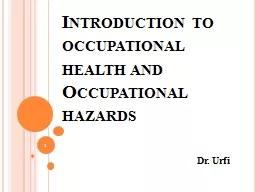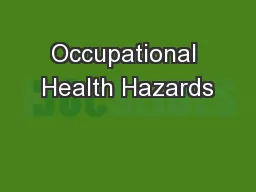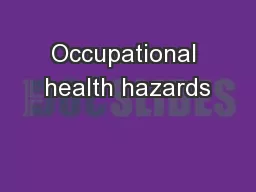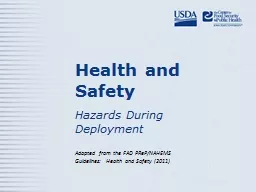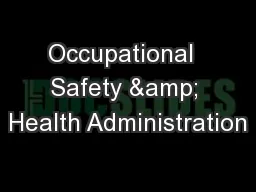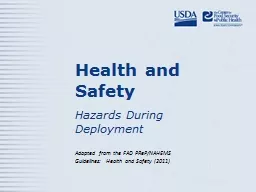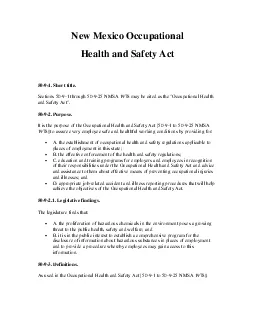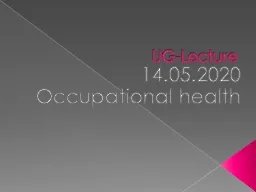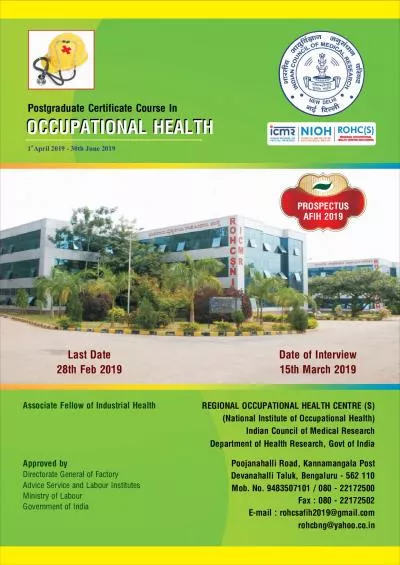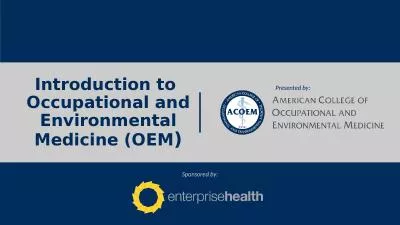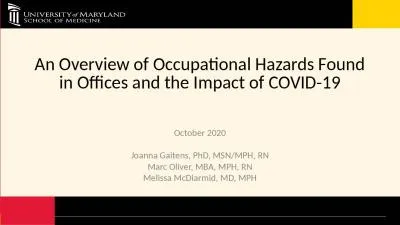PPT-Introduction to occupational health and Occupational hazards
Author : ruby | Published Date : 2022-06-07
Dr Urfi 1 OCCUPATIONAL HEALTH DEFINITION Joint Committee of WHO and ILO 1950 Occupational health should aim at the promotion and maintenance of the highest degree
Presentation Embed Code
Download Presentation
Download Presentation The PPT/PDF document "Introduction to occupational health and ..." is the property of its rightful owner. Permission is granted to download and print the materials on this website for personal, non-commercial use only, and to display it on your personal computer provided you do not modify the materials and that you retain all copyright notices contained in the materials. By downloading content from our website, you accept the terms of this agreement.
Introduction to occupational health and Occupational hazards: Transcript
Download Rules Of Document
"Introduction to occupational health and Occupational hazards"The content belongs to its owner. You may download and print it for personal use, without modification, and keep all copyright notices. By downloading, you agree to these terms.
Related Documents

